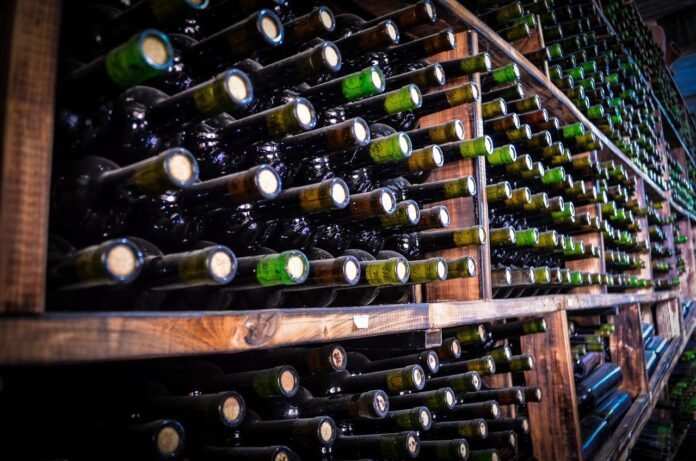A wine collection is a truly worthy investment that has no price tag as far as wine enthusiasts are concerned. When wine is collected, it must be stored and preserved properly to ensure the quality is not affected. Therefore, one of the pieces of equipment needed to ensure that the wine cellar is preserving your wine as desired is a wine cellar cooling unit.
Therefore, in this detailed article, we will show you all you need to know about these units that are a must-have for every wine collector.
What they are
A cellar cooling unit is a specialized system that is designed and built to maintain the right humidity and temperature within a cellar, cabinet, as well as other special refrigeration usages.
This equipment is important for the preservation of wine as they require certain humidity and temperature to be at their best conditions. Your cellar should be kept at a relative humidity of 50 to 70% and a temperature range of 50° to 59°F. These conditions must be kept constant to ensure optimal preservation which is what these units do.
How do they Work?
The humidity and temperature of a cellar change a lot than most people realize during the day. As a result, when your wines are exposed to such fluctuating conditions, it could affect their taste and quality. Hence, it is expected that you find a way to maintain these conditions.
Interestingly, even if you have an air conditioning unit installed in your house that also services the cellar, it is not sufficient enough to maintain the room humidity and temperature.
The humidity range we mentioned above must be maintained for the cork’s health. An extremely dry cellar can cause the cork to become dry which will cause it to shrink or crumble. Likewise, a very humid cellar can lead to mold build-up on the cork which will cause contamination. Hence, the storage must be neither too dry nor humid.
The temperature that is commonly acceptable for wine storage is 50° to 59°F as we already mentioned. If a wine is too hot, it can get spoilt and cooked. In contrast, if it is too cold, the wine can freeze and extend causing the cork to be pushed out. This, in turn, allows the wine to be exposed to oxygen. This is why the temperature must be maintained.
When the temperature is maintained it ensures that the drink matures properly. On the other hand, the humidity ensures the cork is kept in its best condition. Interestingly, both conditions are linked together as they affect the other. If the temperature rapidly changes, the humidity is affected.
As a result of all the above, many collectors don’t mind spending the extra money to get a cooling unit to ensure that these conditions in the cellar are kept constant.
These pieces of equipment remove excess water in the air which causes the room to remain cool. At the same time, they do not remove so much water because they must ensure that the humidity level is also maintained. The main parts of these devices are a condenser, compressor, evaporator coil, and metering device.
The process of refrigeration begins at the compressor. This part of the device draws in low-temperature gas/low pressure directly from the device’s evaporator coil. The air that is drawn is then compressed to a high-temperature ware liquid/high pressure which is moved through the coils.
This liquid is then sent to the unit’s metering device which leads to a dip in the pressure to a low-temperature liquid/low pressure. After this, the liquid is sent to the evaporator coil which absorbs the heat and then sends out cooler air into the cellar.
It is important to remember that self-contained units as well as split systems in the process of sending cool air to the cellar sends out the absorbed heat to the other end of the device. Hence, the exit or room used as the heat exhaust must be large enough to allow proper dispersion of heat. If the exit or room is too small, it can cause the device to heat up thereby leading it to overwork which will cause the efficiency to drop.
Hence, it is recommended that the unit disperses heat outside your home completely to avoid this problem.
Apart from temperature and humidity, light, variance, and vibration are other factors that can influence your collection’s aging process. Hence, you should also keep an eye on those.
Types of Cooling Units
There are 3 types of these devices which we will quickly take a look at. This will help you make a decision on which to go for as search for the perfect choice for your wine cellar.
Self-Contained
Self-contained units can be said to be the most common and most popular of all three (A self-contained wine cellar cooling unit is also known as a through-the-wall cooling unit).
This equipment is designed to stand alone. It is perfect for wine cabinets as well as some type of wine room. You will need to provide adequate ventilation for this unit if you want it to function optimally and maintain the temperature and humidity you desire.
It comes with a condenser and evaporator that are fitted together. As a result of its compact design, the installation process is both easy and quick. You can even do it yourself without having to hire any refrigeration technician. Therefore, you can save costs if you opt for this kind of cooling unit.
Furthermore, it doesn’t require refrigeration lines or ductwork since it is a self-contained device. All you need are packed into one simple build. This device gets its other name “through-the-wall” as a result of it being fixed and vented directed through your cellar wall.
As we said, it is the most common and popular. The reason is because of all we mentioned so far which includes its easy installation and its general upkeep.
Split System
This cooling unit is also known as a ductless system because they do not require ducts to function. Unlike self-contained, the condensing unit and the fan coils are kept separate in different housings. This system is perfect for cellars that lack direct ventilation.
The cellar will house the evaporator coil of the system. However, the cooling unit’s fan, coil, and compressor will be placed outside of the cellar or in an adjacent room. This is done to ensure that the unit has adequate ventilation which is necessary as it lacks ducts. A refrigeration line or flexible hose is usually used to connect the interior component to the exterior one.
These systems are renowned for their longevity compared to self-contained as well as their efficiency. Furthermore, thanks to the fact that the fan, coil, and compressor are kept outside, your cellar is less noisy when compared to a cellar that houses a self-contained.
The reduction of noise is also advantageous in the sense that the vibrations which the system produces will not affect your collection. Hence, the aging process is not affected in any way.
This system has different kinds of mounts that allow you to place this device on your walls, ceiling, or rack.
Ducted System
Ducted systems are best for those folks that prefer their cellar to be free from any type of equipment within the cellar’s walls. This system, therefore, makes use of an organized duct system.
Hence, the device itself can be kept separately from the cellar but with the duct system, the temperature and the humidity will still be conditioned properly. Thanks to its design, you can choose to keep the unit indoor or outdoor; hence, you can choose what best suits you.
When compared to the other types already discussed, this system is the quietest and will produce the least vibrations. Therefore, they are best for maintaining the integrity of the aging process.
How are they Installed?
Having looked at the three types, let us discuss how they are installed…
Self-Contained
Open space on your wall that is a bit bigger than the device. Then slide the unit into the space till the rear is directly level to the outside wall. The recommended measurement for it to poke out into the wine cellar is 8 inches.
You can support the front area of the system using different ways such as mounting clips, cellar shelving, etc. Then, seal the openings that are showing with tape
Split Systems
These systems will require the help of a refrigeration technician to carry out the charge and fitting. They will mount the evaporator within the cellar and connect the condenser which will be about 100 feet apart using a double copper line-set tubing. This line-set will be charged fully with refrigerant.
After that, the evaporator and condenser are connected via valve controls or wiring. The condensate drain is then attached to the evaporator’s back.
Ducted Systems
To install these systems, you will need a licensed and qualified HVAC professional that will carry out the installation. Visit https://www.neit.edu/blog/how-to-get-hvac-certified to learn how HVAC professionals get certified. Do not attempt to try this installation yourself.
Reputable Brands
Like most products on sale these days, several brands that manufacture cooling units. Out of the many, you will find out there, the most respectable brands in no particular order are Wine-Mate, CellarPro, and Breezeaire.
These brands manufacture a wide range of units including the three types we just looked at. The devices also come with different features and sizes.
Some are designed with temperature sensors at the back of their return air grills which helps in controlling those environmental conditions. Hence, they can make the air cool while retaining the moisture required by the corks. Therefore, it maintains the proper humidity level while eliminating excess moisture.
Other units are designed with visual and audible alarms that alert you if there is any issue such as the temperature being too hot or cold.
Whichever one you go for, make sure it is one that truly suits your preference, preserves your wine, and is best for your cellar.
Conclusion
Wine cellar cooling units are indeed the heart of your cellar. This is something every true wine enthusiast and collector knows. Hence, they are considered a worthy investment.


























